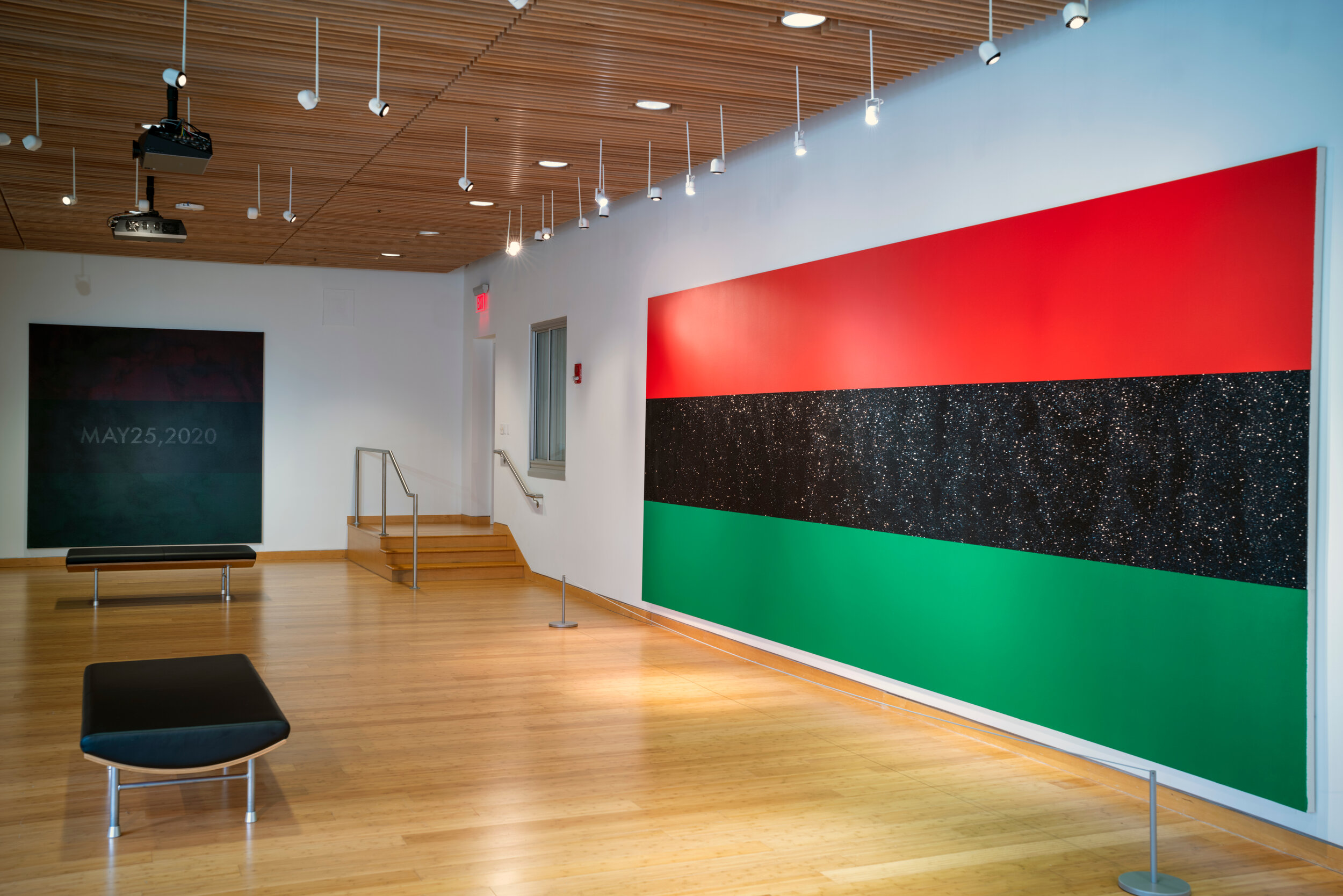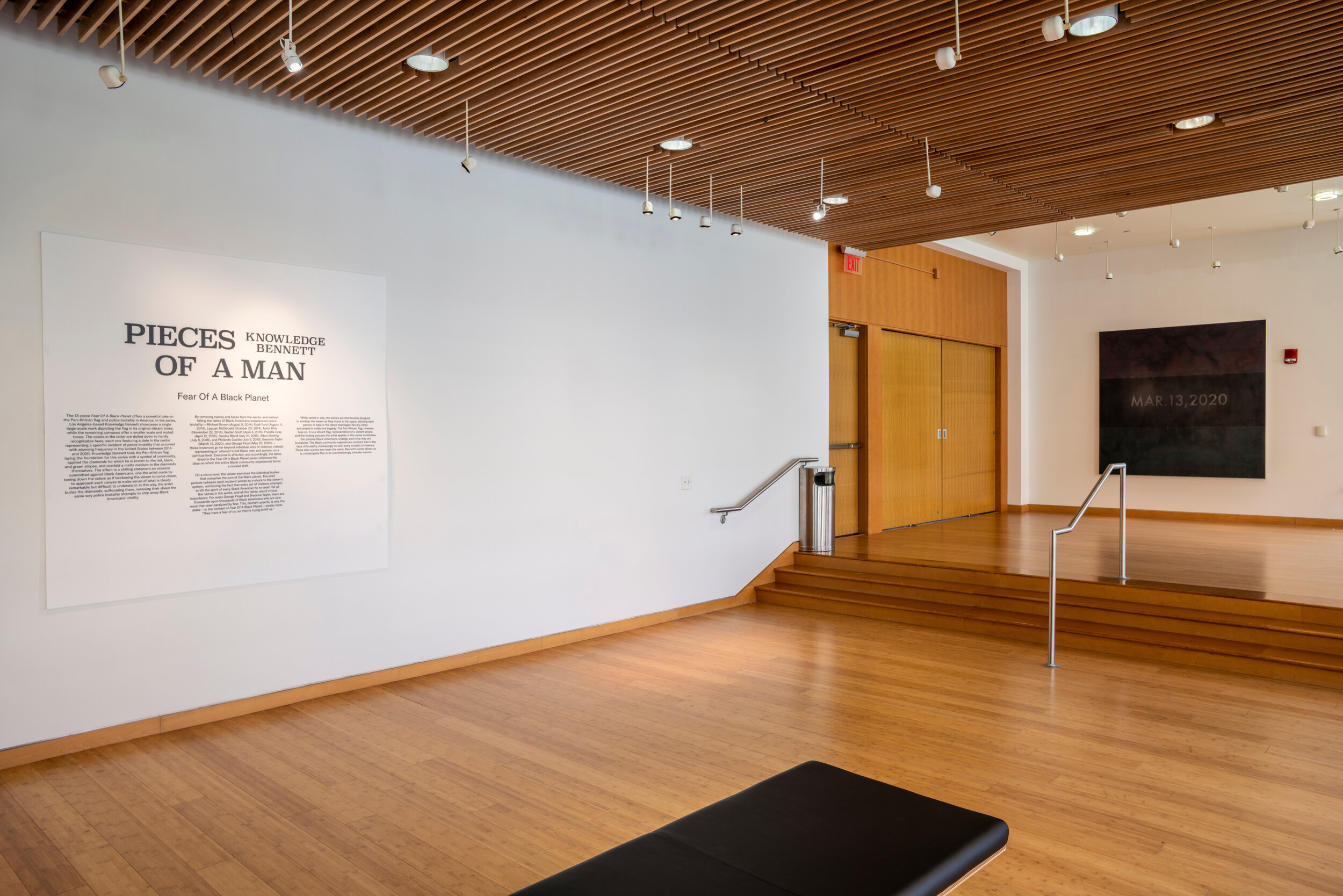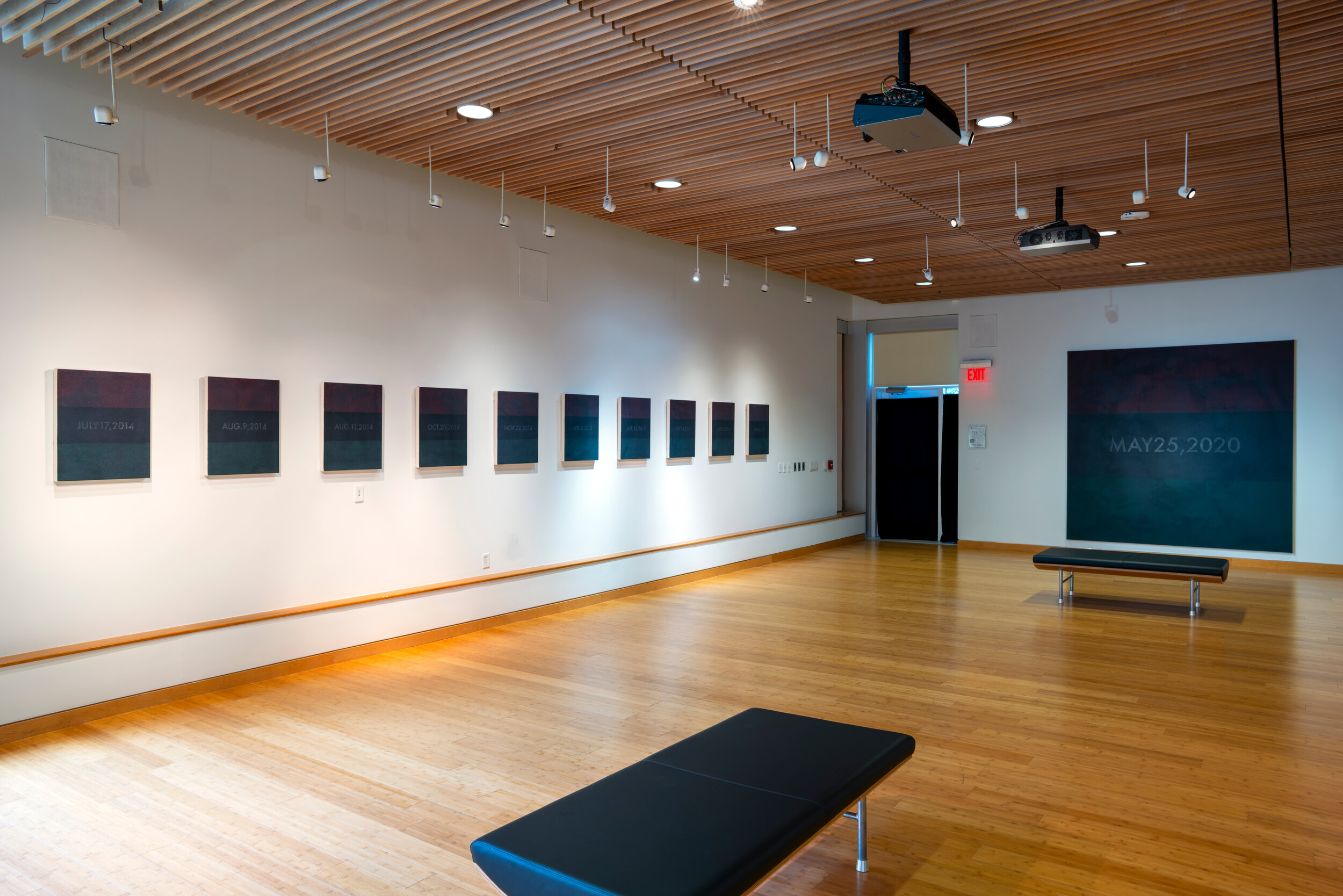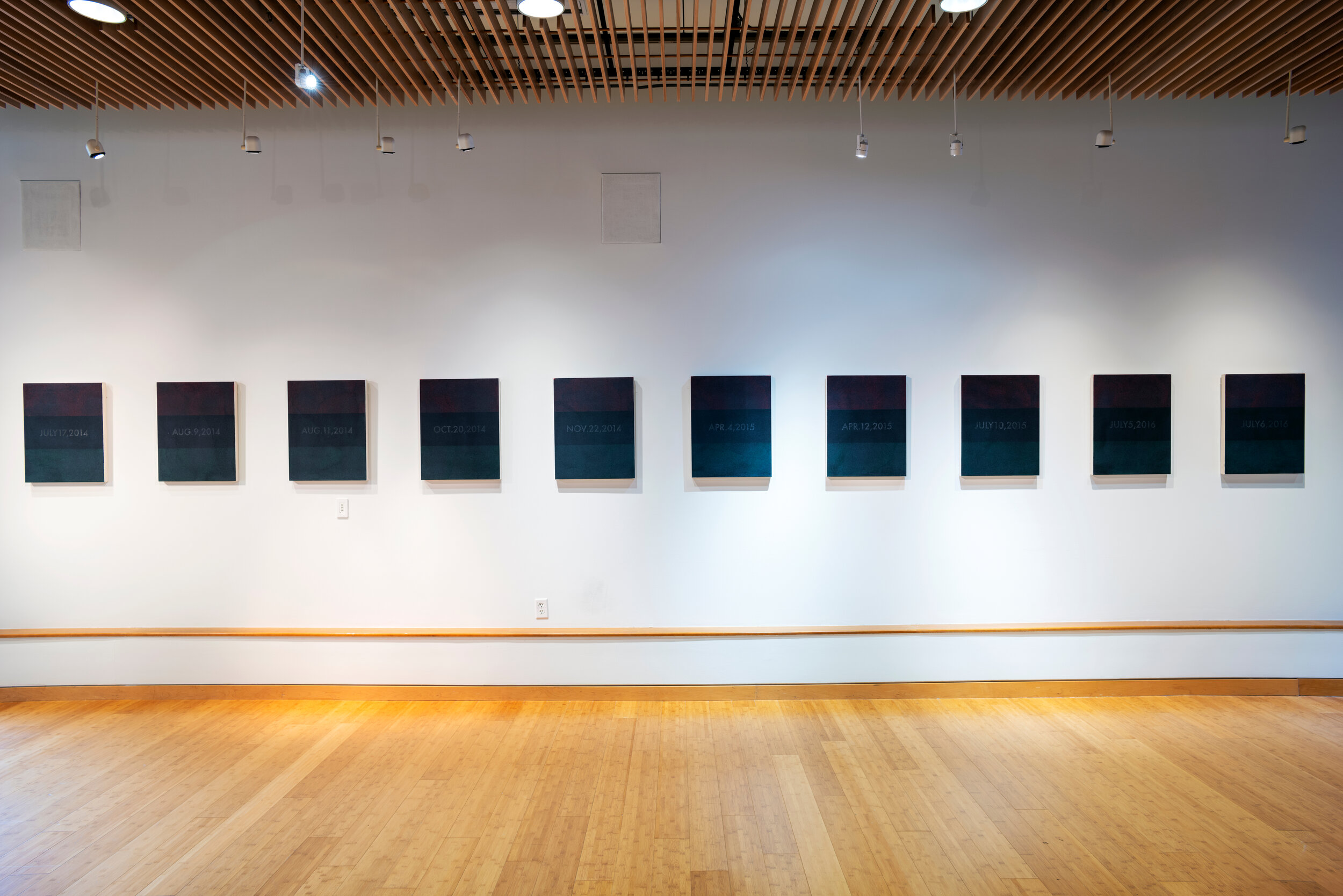Fear Of A Black Planet
The 13-piece Fear Of A Black Planet offers a powerful take on the Pan-African flag and police brutality in America. In the series, Los Angeles-based Knowledge Bennett showcases a single large-scale work depicting the flag in its original vibrant tones, while the remaining canvases offer a smaller scale and muted tones. The colors in the latter are dulled down to hardly recognizable hues, each one featuring a date in the center representing a specific incident of police brutality that occurred with alarming frequency in the United States between 2014 and 2020. Knowledge Bennett took the Pan-African flag, laying the foundation for this series with a symbol of community, applied the diamonds for which he is known to the red, black, and green stripes, and overlaid a matte medium to the diamonds themselves. The effect is a chilling statement on violence committed against Black Americans, one the artist made by toning down the colors as if beckoning the viewer to come closer, to approach each canvas to make sense of what is clearly remarkable but difficult to understand. In this way, the artist buries the diamonds, suffocating them, removing their sheen the same way police brutality attempts to strip away Black Americans’ vitality.
By removing names and faces from the works, and instead listing the dates 12 Black Americans experienced police brutality—Eric Garner (July 17, 2014), Michael Brown (August 9, 2014), Ezell Ford (August 11, 2014), Labuan McDonald (October 20, 2014), Tamir Rice (November 22, 2014), Walter Scott (April 4, 2015), Freddie Gray (April 12, 2015), Sandra Bland (July 10, 2015), Alton Sterling (July 5, 2016), and Philando Castile (July 6, 2016), Breonna Taylor (March 13, 2020), and George Floyd (May 25, 2020)—these instances go far beyond individual acts of violence, instead representing an attempt to kill Black men and women, on a spiritual level. Everyone is affected, and accordingly, the dates listed in the Fear Of A Black Planet series reference the days on which the entire Black community experienced terror, a marked shift.
On a micro level, the viewer examines the individual bodies that comprise the sum of the Black planet. The brief periods between each incident serves as a shock to the viewer’s system, reinforcing the fact that every act of violence attempts to kill the spirit of every Black American: to no avail. Yet all the names in the works, and all the dates, are of critical importance. For every George Floyd and Breonna Taylor, there are thousands upon thousands of Black Americans who are now more than ever paralyzed by fear. This, Bennett asserts, is why the dates—in the context of Fear Of A Black Planet—matter most. “They have a fear of us, so they’re trying to kill us.”
While varied in size, the pieces are intentionally designed to envelop the viewer as they stand in the space, allowing each person to take in the dates that began like any other, and ended in collective tragedy. The Pan-African flag, however, lives on. It is a vibrant flag, representative of a vibrant people, and the muting process the artist applies in this series symbolizes the process Black Americans undergo each time they are brutalized. The Black community experiences constant loss in the face of brutality, increasingly so with every incident of violence. Those who survive are never the same. Bennett’s series allows us to contemplate this in an overwhelmingly intimate manner.




